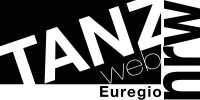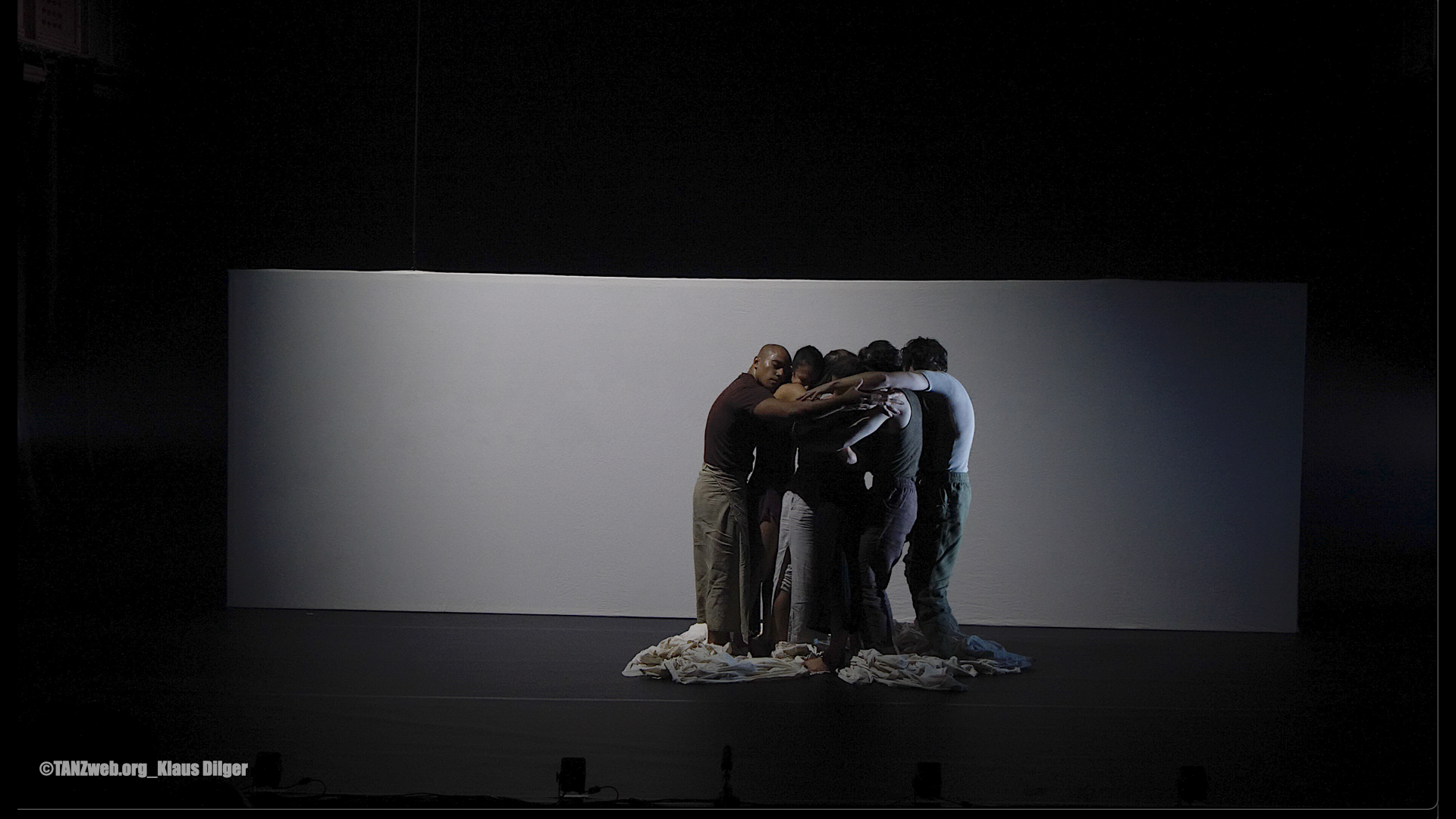schrit_tmacher festival now has also opened in Aachen
A distant, close world
In „Whenua“, the New Zealand Dance Company confronts us with a hope: that, as different as we are, we are all essentially the same.
By: Harff-Peter Schönherr
There are places that have two lives. The Stahlbau Strang factory building in Aachen is one such place. It began its first life in 1890 as an industrial site. A huge crane hook bears witness to this, high above us. If it were to fall to the ground, the result would be a medium-sized earthquake. Pipelines and protective grilles everywhere, concrete and metal doors that look as defenceless as if there were a prison corridor or a chamber full of treasures behind them. The second life of the tall, long, narrow hall, as an event location, always takes on a special radiance when the „schrit_tmacher“ festival is on.
It’s radiance time again. And it starts in the foyer with Joost Meyer’s disturbing „light creatures“, which float under the spine-like skylight band of the red illuminated workshop world as if we were deep underwater. Undead sharks pass over us, zombie-like, mangled and decomposed, and even the moonfish, which would be the first to be crushed if the steel cables had let go of the Damocles-like hook, looks as if it has swum through an acid bath. Nature is suffering, this signals to us, and the cause is man.
Nature is also the subject of the New Zealand Dance Company’s two-part programme „Whenua“, whose Malia Johnstone and Rodney Bell’s „Imprint“ and Eddie Elliott’s „Uku – Behind the Canvas“ catapult us into a world that is often no less shocking than Meyer’s ghosts. It is about the value of all life and the overexploitation that we are driving at it. It is about the closeness to nature that so many of us lack.
„Whenua“ means „land“ in Maori, and the land that the two 40-minute films take us to is not just Aotearoa, New Zealand. In the end, we delve deep into the world of the indigenous population, including spiritual landscapes. The central message: our inner being withers away if there is no humanity, no mutual tolerance, no mutual respect.
And so the evening begins with a highly emotional invitation to be close to one another, with an embrace of all by all, accompanied by simple piano and melodic strings. And as longingly as it begins, it ends just as longingly: in the supra-individual, supratemporal hope of being one with everything, including one’s country and ancestors, of living without threat, in peace.
It is an evening of unbridled energy, tremendous power, and the fact that both choreographies, despite their own individual profiles, have strong parallels, from the language of movement to the music, from the themes to the lighting direction, does it good. „Imprint“ and „Uku – Behind the Canvas“ deepen each other.
Bodies glide, tumble and fall, rise up and collapse, lie as if dead, pile up on top of each other. Bodies whirl and twitch, crawl and tumble, pause and freeze. Bodies writhe around each other, tug at each other. Love becomes a fight, fight becomes love.
It is athletic, acrobatic, highly precise. Abrupt wildness stands next to tender elegy, joy next to agony. Archaism is shared, atavism. Sensitivity is shared, sublimation. We witness humanisation, dehumanisation. Performers often stand like statues, and if Michelangelo had created them, it would not be surprising.
One parallel between „Imprint“ and „Uku – Behind the Canvas“ is the white. Spotlights pierce it like lances through the blackness, glaringly bright. A light-coloured wall, at once projection, shadow-casting and backlighting surface, rises and falls as if in imperceptible breaths, turns, suddenly plunges into the diagonal. A white floor cloth becomes a landscape in relief, an inner wound. Figures approach circles of light like abyssal shafts. Ecstatic figures spread white paint from a bowl and their bodies cover the floor with it. That is powerful.
Another parallel between „Imprint“ and „Uku – Behind the Canvas“ is the strongly rhythmic, often percussive sound. Bursting beats make the floor shake, deep drones rumble through the stomach. Technoid shimmering, splintering crashes, fat beats, plus choral, orchestral force. That’s powerful.
„Whenua“ challenges us. Through cryptic symbolism. Through extreme abstraction. Through erratic emotions. Through absurd comedy that abruptly cuts through the deepest seriousness. Through performances that are only seconds long. Through strobe flashes that chop every movement into frenzied speed.
But this challenge does not lead to irritation. The evening shows an ensemble that works brilliantly as a collective. The sense of space and timing are excellent; the acting potential is impressive.
However, there are weaknesses, both staging and technical.
It is puzzling why the Maori language is not translated. It is a mystery why a spotlight suddenly shines so brightly into the rows of seats that it is brighter in the audience than on the stage. The role of the wheelchair user, who is shown in a video at the beginning, is also puzzling. Who is he? Why is he performing? Why does he no longer play a role afterwards? We don’t know.
What’s more, the stage, just 12 steps wide, is small. Longer, scene-preparatory paths cannot be realised on it; every event is forced to take place in great immediacy. What’s more, the front rows of the audience can see deep into the scenery. The dancers therefore have to stay in character even though they have long since left the stage. What’s more, the side windows of the factory are not darkened. Especially in quiet, rather dark scenes, the headlights of passing cars are a considerable distraction.
Incidentally: Anyone who briefly thinks of Francis Ford Coppola’s „Apocalypse Now“ when watching „Uku – Behind the Canvas“, the gloomy heart of darkness, the inaccessible realm of Colonel Kurtz, for the sake of the visuals, is not entirely wrong, despite the haka, the ritual dance of the Māori, to which Elliott gives a lot of space here. But then a few women come in. And start blaspheming, for whatever reason. And destroy the gloom. What a pity.
The way back from the foreign land, which is no longer so foreign, leads past the light beings again. They are still swimming. The hook is also hanging in its place, and it looks as if it will continue to do so for a long time. Perhaps there really is still hope for us.


















